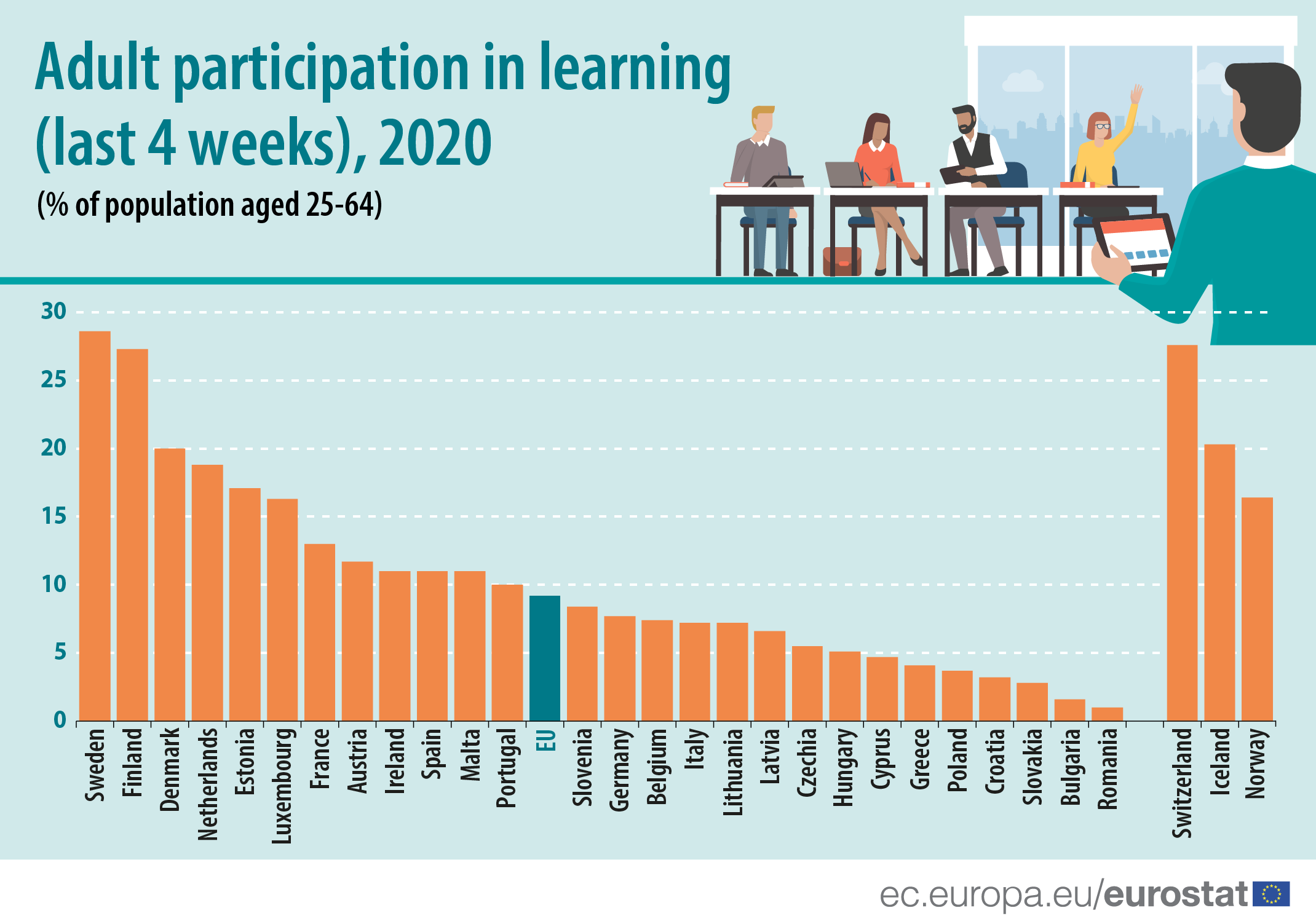
The latest results from the European Union (EU) labour force survey show that since 2010, the participation rate of adults in lifelong learning rose gradually until 2019, from 7.8 % to 10.8 %. However, in 2020, it dropped by 1.6 percentage points (pp), reaching 9.2 %.
The adult participation in learning was one of the benchmarks of the strategic framework for European cooperation in education and training up to 2020, called “Education and Training 2020” (ET 2020). This benchmark aimed to attain an average of at least 15 % of adults participating in lifelong learning in the EU.
The participation rates in nearly all Member States increased steadily between 2010 and 2019, except for Denmark, Slovenia, Cyprus, Spain, Poland and Romania. This trend reversed between 2019 and 2020 as only three Member States showed a small increase in this period: Spain (+0.4 pp), Greece and Lithuania (+0.2 pp for both).
Six Member States exceeded the 15 % benchmark by 2020: Sweden (28.6 %), Finland (27.3 %), Denmark (20.0 %), the Netherlands (18.8 %), Estonia (17.1 %) and Luxembourg (16.3 %). In contrast, seven Member States had participation rates below 5 %: Romania (1.0 %), Bulgaria (1.6 %), Slovakia (2.8 %), Croatia (3.2 %), Poland (3.7 %), Greece (4.1 %) and Cyprus (4.7 %).
Source dataset: trng_lfse_01
For more information:
- Have a look at our Statistics Explained article on Adult learning statistics.
- Overview of education and training statistics
- The indicator to measure adult participation in learning is defined as the share of people aged 25 to 64 who stated that they received formal or non-formal education and training in the four weeks preceding the survey.
To contact us, please visit our User Support page.
For press queries, please contact our Media Support.

